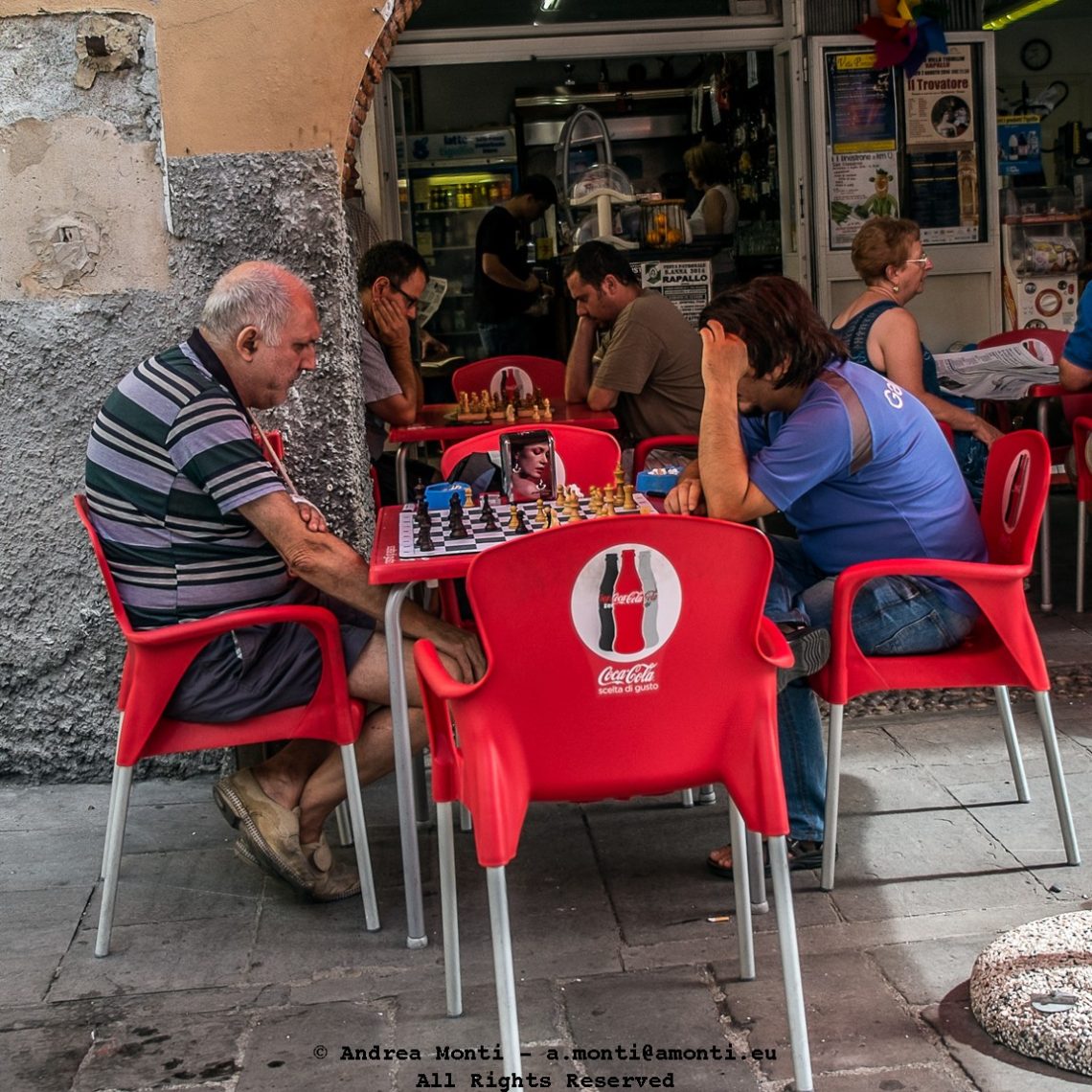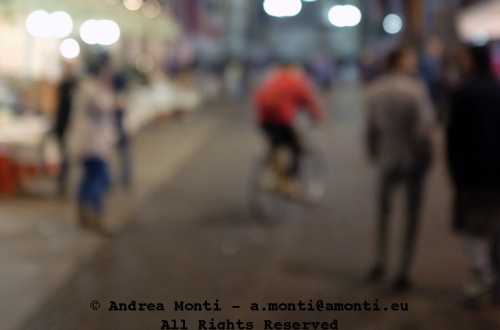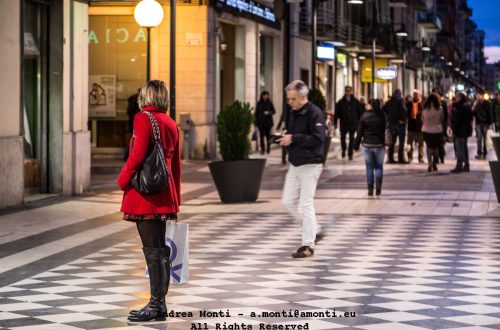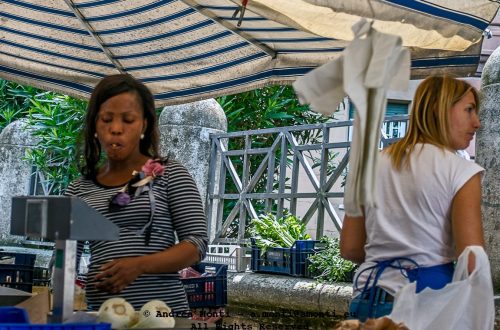
The Chess Players’ Summer Nest
There’s a rhythm to afternoons like this. The sun heavy in the air, the shade of the arcade offering just enough relief to keep men rooted to their chairs, eyes fixed on the chequerboard battlefield. The setting is unmistakably local — a small bar spilling its life out onto the pavement, Coca-Cola chairs scarred by years of use, walls patched and peeling. Everything here is part of the game, even the hum of conversation from the tables beyond.
What makes the photograph work is its layering. The first plane is the duel: two players hunched, arms folded, eyes locked on the chessboard, their bodies mirroring each other in stubborn concentration. Beyond them, another game unfolds at the next table, echoing the first, as if strategy is contagious. In the back, the bar frames the scene — refrigerators stocked, posters taped to the walls, a reminder that this isn’t a staged tableau but a slice of a living street.
Technically, the exposure is well handled for such a mixed light situation. The shaded foreground retains detail without drowning in shadow; the lit interiors of the bar are bright but not blown out. The colours are rich without being over-saturated — the Coca-Cola red pops just enough to anchor the composition, without overpowering the earthy textures of wall and pavement. Depth of field is generous, keeping all the players and surroundings crisp, which suits the documentary nature of the shot.
Compositionally, the diagonal of the table legs and chairs pulls you into the scene, leading the eye from the closest player back through to the second game and into the bar. It’s a photograph that rewards lingering: the bent posture of a man who’s been thinking too long, the slight lean of an opponent testing his patience, the casual shoes of someone who could just as easily be here tomorrow.
It’s called a summer nest for a reason — a place to return to, day after day, where the game changes but the players, the chairs, and the air remain the same.




